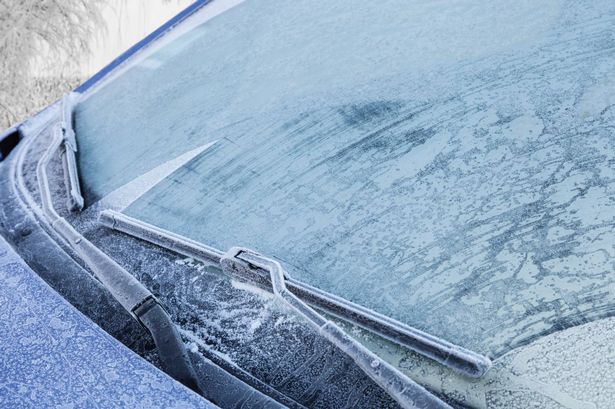The bane of winter mornings for many drivers is the icy grip that frost exerts on vehicle windshields and windows, transforming a simple commute into a frustrating battle against nature. Scraping away layers of ice with a flimsy plastic scraper or enduring the agonizingly slow defrosting process of the car’s heating system can feel like an eternity stolen from a precious morning. However, amidst the flurry of folk remedies and commercial de-icers, a surprisingly simple and efficient solution has emerged, offering a swift and effective means of liberating your car from the icy shackles of winter. This method, rooted in basic scientific principles, involves a readily available household item and requires minimal effort, making it a welcome alternative to the traditional, time-consuming methods of ice removal.
The secret to rapidly clearing your frosted windows lies in a simple solution of water and rubbing alcohol. Rubbing alcohol, also known as isopropyl alcohol, possesses a much lower freezing point than water, typically around -128°F (-89°C). When mixed with water, it lowers the freezing point of the solution significantly, preventing it from turning into ice at temperatures well below the freezing point of pure water. This property makes the alcohol-water mixture highly effective at melting ice on contact. The recommended ratio for the de-icing solution is two parts rubbing alcohol to one part water. This proportion ensures a sufficiently low freezing point while minimizing the concentration of alcohol, which can potentially damage certain types of car paint or plastic trim if excessively concentrated. The application process is remarkably straightforward: simply fill a spray bottle with the pre-mixed solution and liberally spray it onto the iced-over surfaces. The ice will rapidly melt upon contact, allowing for easy removal with a scraper or even a simple wipe with a cloth.
The effectiveness of the rubbing alcohol solution stems from its ability to disrupt the hydrogen bonds that hold water molecules together in their rigid, crystalline ice structure. Water molecules are polar, meaning they have a slight positive charge on one end and a slight negative charge on the other. These opposite charges attract each other, forming hydrogen bonds that link water molecules together. In ice, these hydrogen bonds form a stable, lattice-like structure. The addition of rubbing alcohol, which is less polar than water, disrupts this ordered arrangement. The alcohol molecules interfere with the hydrogen bonding between water molecules, weakening the ice structure and causing it to melt at a lower temperature. This process is accelerated by the exothermic nature of the mixing process, meaning that when alcohol and water are combined, a small amount of heat is released, further contributing to the melting of the ice.
Beyond its scientific underpinnings, the rubbing alcohol method offers several practical advantages. Firstly, it is remarkably cost-effective. Rubbing alcohol is readily available and inexpensive, making it a far more economical option than commercial de-icing sprays. Secondly, it is environmentally friendly. Unlike some de-icing products that contain harmful chemicals, rubbing alcohol is relatively benign and poses minimal environmental risk when used responsibly. Thirdly, it is quick and convenient. The entire de-icing process takes mere minutes, allowing for a swift and hassle-free departure on even the frostiest of mornings. Finally, this method can also be used preventatively. Spraying the solution on your windshield the night before a predicted frost can prevent ice from forming in the first place, saving you time and effort in the morning.
While the rubbing alcohol solution is highly effective, certain precautions should be taken to ensure its safe and optimal use. Firstly, it is essential to use the correct concentration of alcohol. A concentration higher than two parts alcohol to one part water is not recommended, as it could potentially damage car paint or plastic trim. Secondly, avoid direct contact of the solution with rubber seals or wipers, as prolonged exposure to high concentrations of alcohol can cause these materials to degrade. Thirdly, always ensure the spray bottle is clearly labeled to avoid accidental misuse. Finally, store the solution out of reach of children and pets, as rubbing alcohol can be harmful if ingested.
In conclusion, the simple solution of rubbing alcohol and water offers a remarkably efficient and convenient method for combating the winter woe of iced-over car windows. Its efficacy stems from the scientific principles of freezing point depression and hydrogen bond disruption, while its practicality lies in its affordability, environmental friendliness, and speed. By understanding the underlying science and observing the necessary precautions, drivers can embrace this simple yet powerful solution to conquer the icy grip of winter and enjoy a smoother, more efficient start to their day. This method stands as a testament to the power of simple solutions rooted in scientific understanding and provides a welcome respite from the tedious and time-consuming traditional methods of ice removal, making it a valuable tool in the arsenal of any winter driver.














